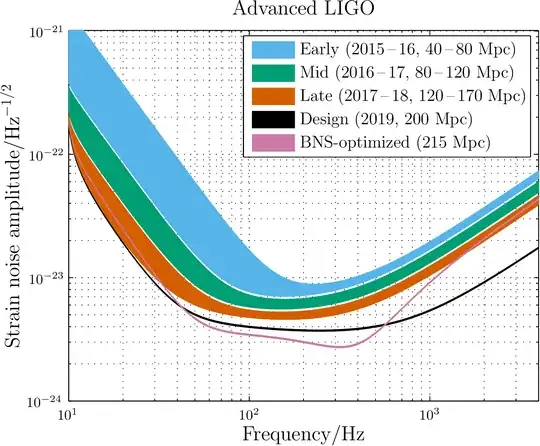There's a fair few physically meaningful quantities whose units include half-integer exponent, typically in examples where the quantity in question needs to square to some kind of intensity or density.
The clearest one is quantum mechanical wavefunctions $\psi$, for which the square modulus $|\psi|^2$ is a probability density (i.e. with units of inverse length in 1D or inverse volume in 3D) so you'll have $[\psi(x)]=[L^{-1/2}]$ in 1D and $[\psi(\mathbf r)]=[L^{-3/2}]$ in 3D.
You very often see the unit $\mathrm{Hz}^{-1/2}$ in any field that requires signal analysis in any capacity, where it comes out naturally as a way to describe amplitude spectral densities of many kinds. This happens when you have some signal $f(t)$ (in, say, dimensionless strain) and you care about its Fourier transform, i.e. you want to represent $f(t) = \int_{-\infty}^\infty \tilde f(\omega) e^{-i\omega t} \mathrm d\omega$ in such a way that $\int_{\omega_1}^{\omega_2} |\tilde f(\omega)|^2 \mathrm d\omega$ represents the power the signal carries in that spectral band.
A nice, recent example of this in action is the noise sensitivity curves for LIGO and other gravitational-wave detectors as a function of frequency:

Image source
If you want to go beyond half-integer powers into proper $n$th roots, then in principle there's nothing to stop you, but the chances of finding physically-meaningful examples do decrease dramatically, because physics tends to use quadratic forms of its dynamical variables far more often than you see cubic or other multi-linear dependences. I'm not aware of any real-world examples, but they're perfectly possible.
Things do change, however, if you move away from rational functions (i.e. combinations of fractional powers) and into transcendental functions (like the exponential, logarithm, and trigonometric functions), which can only be defined meaningfully using processes that add or compare a quantity $x$ with a power $x^n$ of that same quantity. As I explained in this previous thread, this completely breaks dimensional analysis, and it is not meaningful to put dimensionful quantities as the arguments of transcendental functions.
(There is a minor, partial exception with the specific case of the logarithm, where you can "split" a logarithm of the form $\log(q_1/q_2)$ into a subtraction $\log(q_1)-\log(q_2)$ under the strict requirement that all appearances of $\log(q)$ be followed by a corresponding ${-}\log(q')$ with $[q']=[q]$, and that both occurrences take the logarithm of the numerical value in the same units. This is useful if you only care about things up to an additive (or multiplicative) constant, but ultimately it just boils down to an elaborate formalism for dealing with $\log(q_1/q_2)$, i.e. the logarithm of a dimensionless quantity, in a way that allows you to forget that fact.)
